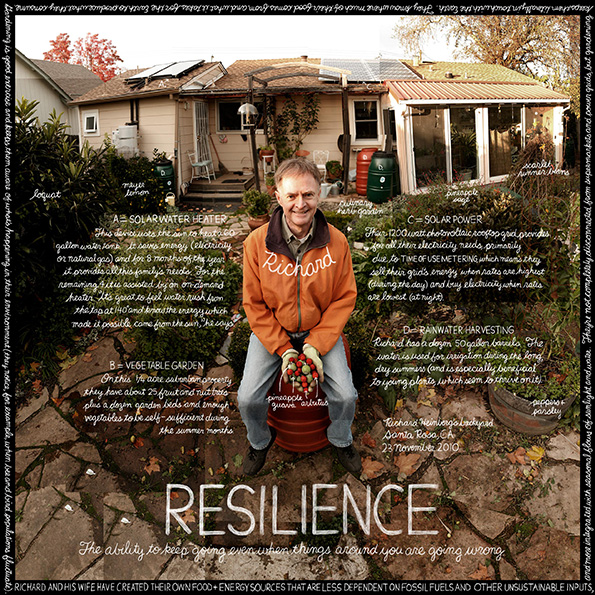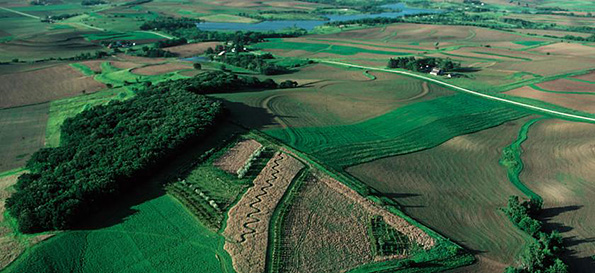Farming Resilience:
Sustainability is survivability. Sustainability is toughness. Sustainability is resilience.
We wrap up this year’s Watchword series looking eagerly towards the future of sustainable agriculture, armed with the key tools and concepts we need to build a resilient food system.

Sustainability is #Resilience. Learn what goes into creating a resilient food system. @deliciousliving #foodlist
So what exactly is resilience? It’s the ability to keep going, even when things around you are going wrong. Its the fearless response of a community in the face of disaster. Resilience is creating innovations to meet challenges.
A resilient food system is able to absorb the shocks of climate change and population growth without suffering a decline in food production and food access. “Family farmers and food revolutionaries are working to create this paradigm shift [in food systems] by restoring ecological resilience in their local communities,” notes Danielle Nierenberg, co-founder of Food Tank. Examples of how these farm heroes are building ecological resilience include crop diversification, wildlife habitat preservation on farms, and building soil fertility and soil moisture retention on farms.
Title: Resilience
Location: Richard Heinberg’s Backyard, Santa Rosa, CA
Featuring: Richard Heinberg
Richard and his wife have created their own food + energy sources that are less dependent on fossil fuels and other unsustainable inputs, and more integrated with seasonal flows of sunlight and water. They’re not completely disconnected from supermarkets and power grids, but gardening keeps them literally in touch with the earth. They know where much of their food comes from and what it takes from the earth to produce what they eat. Gardening is good exercise and keeps them aware of what’s happening in their environment—they notice, for example, when bee and bird populations fluctuate.
In Richard’s backyard, a solar water heater, vegetable garden, solar power grids, and rainwater harvesting barrels can be found.
Video: "After the Flood" by The Perennial Plate
There are countless risks in farming. Loss of crops to disastrous weather events are one of the many concerns of farmers. In this film, The Perennial Plate visits farms in upstate New York following the devastation of Hurricane Irene and the tropical rains that followed. Farmers had been working all year in anticipation for the coming crop, only the be entirely wiped out in a matter of days.
However, rising out of the muck and destruction, communities organized to help their farmers. Thanks to models like community supported agriculture (CSA), households are sharing the risks and bounty with farmers. In this case, CSA members demonstrated the power of community support and resilience in the wake of Hurricane Irene.
This is a tale of resilience in a vibrant farming community.
Healthy farms: A vision for U.S. agriculture
U.S. agriculture is at a crossroads. The path we’ve been on, industrial food production, is a dead end. It damages air, water and soil, harms rural communities, and limited future productivity.
But there’s a better way. Scientists call it agroecological farming. We call it healthy farms. Healthy farms can be just as productive as industrial farms, but they’re better for the environment, the economy, and the people who grow (and eat) food.
The Healthy Farm principles are focused on productivity, economic viability, and environmental stewardship.
To meet these goals, farmers use an approach to agriculture that focuses on four qualities that characterize the healthy farm:
1. It is multifunctional, recognizing that productivity, while indispensable, is not the farm's sole objective. As well as providing food, the farm also performs important social, economic and environmental functions.
2. It is regenerative, using methods that constantly improve the fertility of the soil, foster biodiversity both within and beyond the farm's boundaries, and recycle essential nutrients.
3. It is biodiverse, incorporating a wide variety of crops, land use choices, and options for raising livestock and poultry.
4. It is interconnected, seeing the farm as an integral part of the landscape that surrounds it, not an isolated production facility.
Three things you can do
The beauty of resilient and sustainable food systems is that they can be achieved at many different levels. Resources are available for all food operations, big and small. It just starts from the ground up. To build a resilient food system, resilient characteristics must be selected and preserved, and soil fertility must be built and maintained. From there, it’s a matter of natural processes and how species can withstand impacts.
- Build your resilient life! Sometimes it’s just easier to build it yourself. Take the project into your own hands! It’s all within arms reach with open source platforms, like Farm Hack.
- Cultivate your local, resilient food system. Food quality affects your life and the life of your community. Take a look at this case study from Iowa.
- Build the foundation for a resilient food system. Familiarize yourself with the components of a resilient food system and ways you can marry these components.

For the past three years, the Lexicon of Sustainability has sought out the foremost practitioners of sustainability in food and farming to gain their insights and experiences on this important subject. What began as a photography project to spread their knowledge has grown to include short films, study guides, traveling shows, a book, and a website where people can add their own terms to this ever-evolving lexicon. See more at www.lexiconofsustainability.com.

